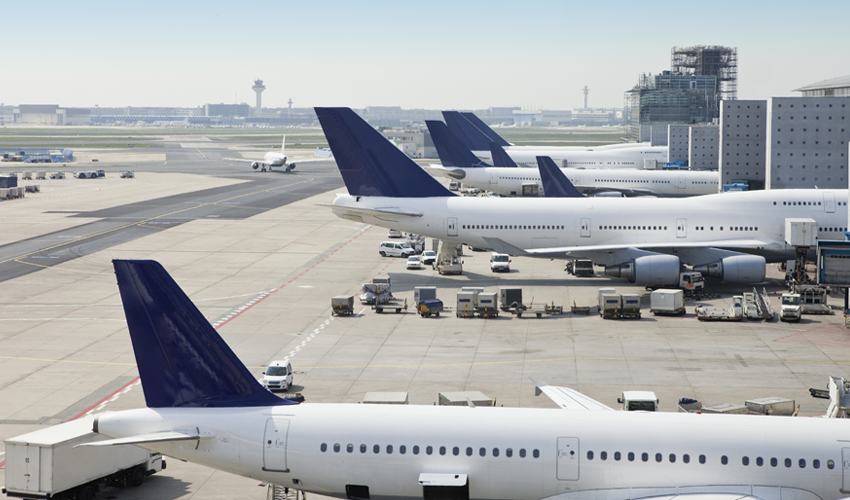Lately, we are seeing aviation headline stories focusing on the analysis of airlines´ on-time performance (OTP). As we approach the summer season, the industry keeps experiencing several challenges relating to flight delays and cancelations. Depending on the region where airlines operate, there is a continued struggle with understaffing and insufficient capacity at different levels. This overshadows the fact that the world traffic demand is rapidly returning to pre-pandemic levels in many parts of the world – which should be a reason of joy. Nevertheless, the conditions around it are fairly uneven.
Poor punctuality affects not only an airline´s reputation but also passenger perception and satisfaction. Why do many airlines still struggle to improve their OTP and how should they deal with that?
Airlines´ on-time performance: A crucial KPI to measure
Perhaps, passengers are not aware of the enormous hard work that goes into making sure a flight is on-time. From the very first second the aircraft lands, hundreds of tasks are executed before it takes the next group of passengers to their destination. So many activities are involved that when any of them is delayed affecting an aircraft’s departure, dozens of flights can be delayed as well on that day. It creates a domino effect.
A Boston Consulting Group study points out that delay minutes double, on average, by the end of the day. That is why U.S. domestic flights, for instance, are about 80% on time at 6:00 a.m. and only about 50% on time at 6:00 p.m. Regarding costs, cutting one minute off the time each aircraft is on the ground between flights can save between $5 million to $10 million a year in freed aircraft time and hidden costs across the operation.
Perhaps no other aspect of an airline´s operation has a deeper impact than OTP. When things go wrong, as they inevitably do, causing airlines to not be on time, this affects overall profits, customer experience, and employee morale. That makes on-time performance a key KPI to assess the success of a certain service for remaining on schedule.
Why is OTP a challenge for many airlines?
Airlines with good on-time performance can be proud of doing a great job in spite of the challenges encountered. Good OTP management is not an easy task as it depends on many factors. Some of them are beyond any airline’s control. These factors include aircraft turnaround delays, extreme weather conditions, late arriving aircraft, airport security lanes, and technical issues.
In the words of Luis Felipe de Oliveira, Director General of Airports Council International, the challenges can be explained due to “structural differences”. In fact, after the pandemic, each airline is encountering different and varied operational challenges that play a role in being on time. Staffing shortages due to Covid related layoffs still have an impact in many regions. In others that is not the case. Recovery in the Asian market is much below that which has been seen, for instance, in the European market. The complexity of the operating conditions can make an airline be on top of punctuality rankings or at the very bottom.

What is a good and a bad airline´s on-time performance?
Good on-time performance is not about achieving 100% punctuality. It means that delayed flights are often able to recover part of their delay at an airport. A good OTP is about delivering against a target that considers the context of the airline, its cost structure, culture, geography, and competitive landscape.
Poor on-time performance on the other hand means that airlines need to build extra margins into their flight schedule to anticipate delays on the ground. Some airlines make the mistake of seeking too low a target. Others go too far and invest excessively in capital and operational expenses.
At the end of the day, the trick is to set the right target. This means to balance the benefits of higher OTP with the costs necessary to deliver it.
Enhanced OTP thanks to Machine Learning
Maintaining good airlines´ on-time performance is an uphill battle. Many processes, functions, people, and technologies need to work together with a high degree of efficiency throughout the day. To avoid a domino effect, airlines need to build resilience so that they can catch up more quickly when disruptions occur. The use of advanced technologies to improve decision making provides great advantages in terms of OTP goals. The introduction of Machine Learning (ML) solutions is showing gains in airline operations.
One area of application is aircraft maintenance. When not done properly it can impact the punctual departure of a flight. Leveraging historical data and Machine Learning algorithms enables sound preventive line maintenance (LM) decisions, informing an LM Technician or Engineer proactively where to replace parts or make preventive checks to determine malfunctions. Another use area is the prediction of task durations that are part of the aircraft turnaround. In combination with information such as the scheduled departure time, ML can help predict whether a flight will be delayed.
Closing up …
On-time performance (OTP) is a crucial metric that airlines must meet in order to remain competitive and profitable. It is important not only because it affects customer satisfaction and loyalty, but also airline profitability.
Achieving good airlines´ on-time performance can be a huge challenge for airlines due to many factors, such as weather conditions, air traffic control delays, and maintenance issues. Therefore, carriers must take proactive steps to improve their OTP by implementing modern technologies and streamlining processes. These steps may include real-time monitoring of operations and introducing predictive analytics tools to forecast potential delays.
>> How do you think airlines can improve their OTP? Let us know in the comments below.





0 comments on “A Matter of Timing – The Race to Improve Airlines´ On-Time Performance”